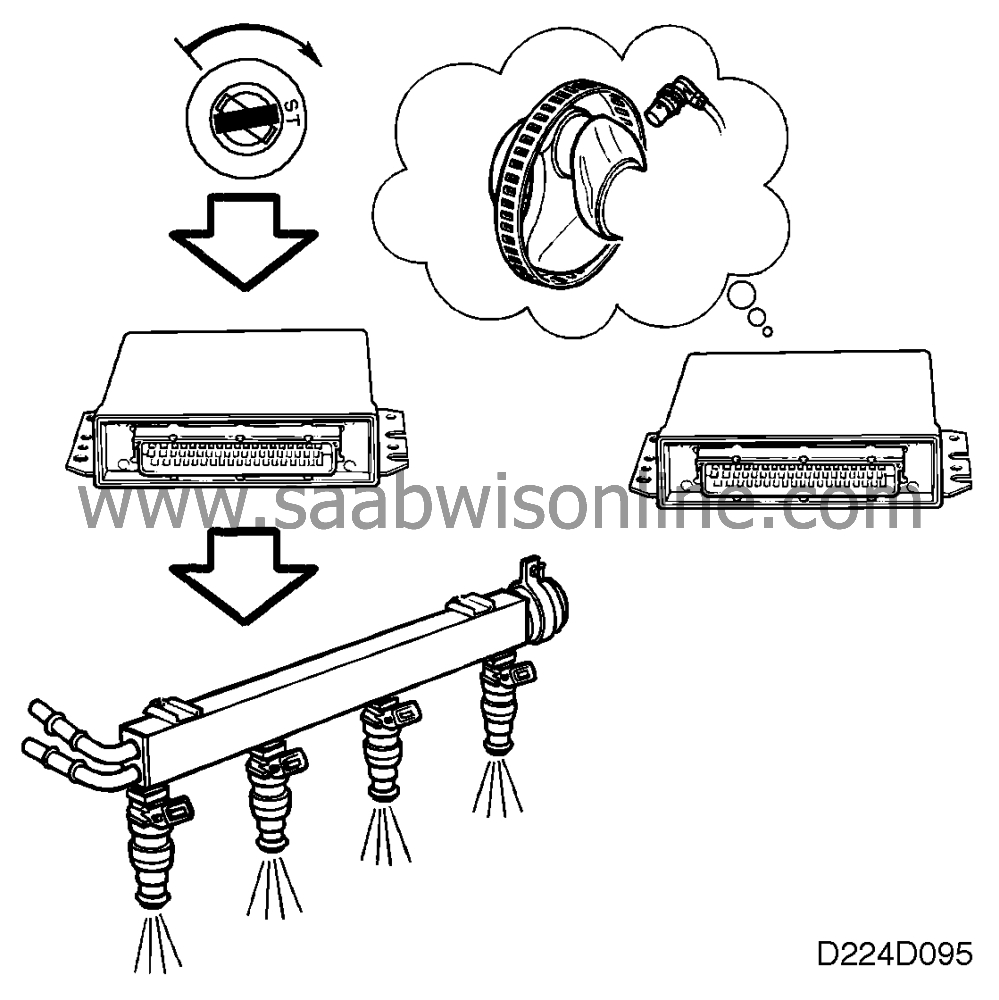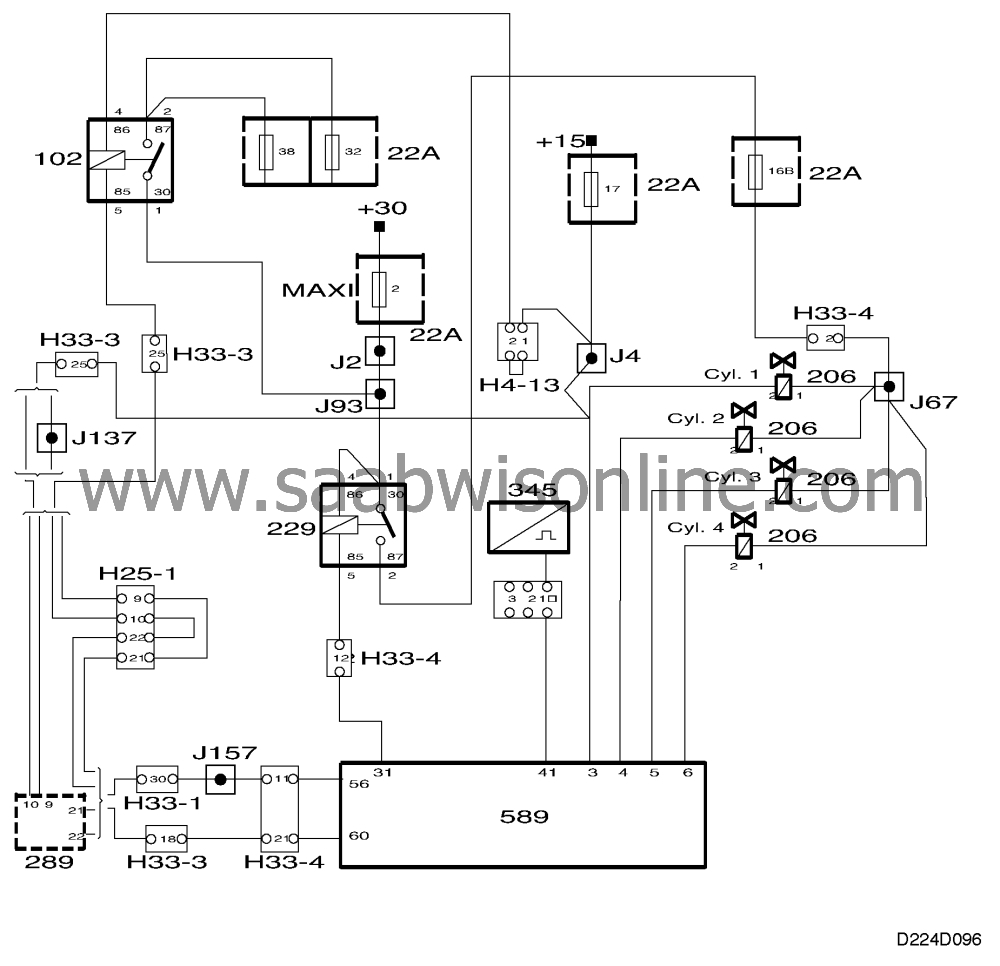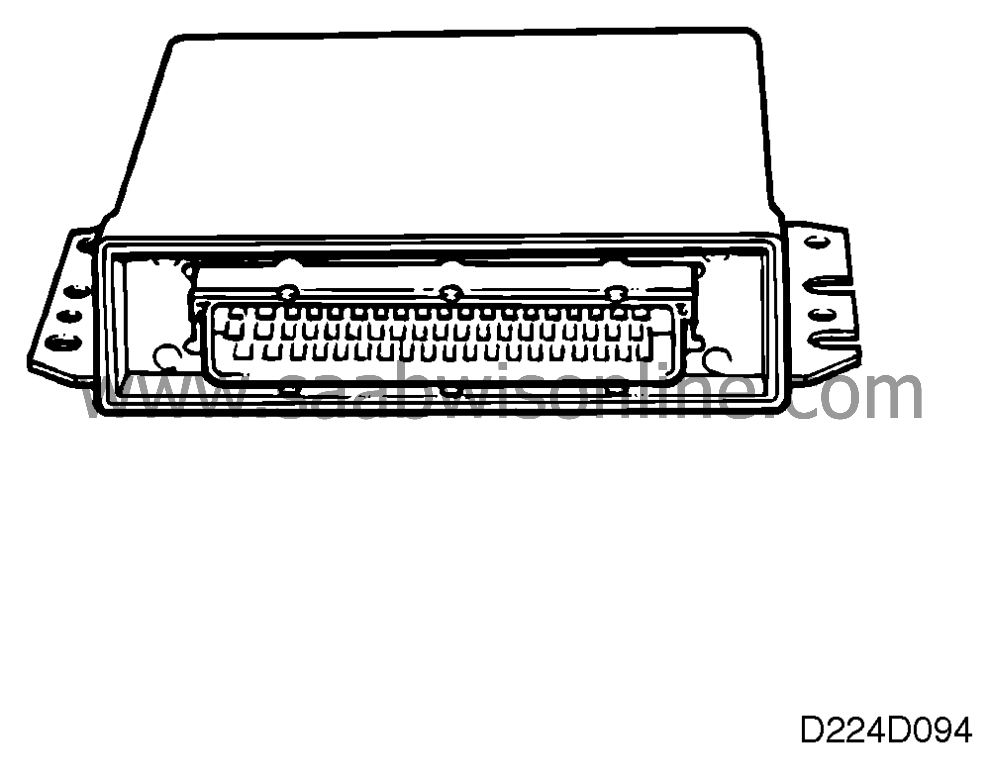Engine control module
| Engine control module |
| • |
the ignition timing (by means of the
ignition discharge module)
|
|
| • |
fuel injection (which is sequential)
|
|
| • |
boost pressure (by means of a solenoid valve)
|
|
The Trionic electronic control module has a 70-pin connector and is located at the right-hand A-pillar. When the powertrain is removed, the ECM connector and its wiring are withdrawn through the bulkhead partition.
The ECM has a 32-bit processor which can perform 2 million calculations per second.
A number of sensors supply the ECM with information. The ECM processes this information using matrices which have been stored in it after engine operation has been optimized. Examples of such important matrices are ignition timing matrices, fuel matrices and boost pressure matrices.
The ECM is programmed for the B204L and is only to be used for this engine in the Saab 900.
The ECM may be damaged by electrostatic discharges or shorting of any of its outputs. Great care must therefore be taken whenever handling the ECM, such as in connection with fault diagnosis using a BOB, for instance.
The engine control module is continuously supplied with power (+30 circuit) and loses adapted values and diagnostic trouble codes stored in its memory if this power circuit fails.
The ECM is adjusted for a voltage between 8 and 16 V during driving.
Switching on the ignition activates the engine control module and causes the CHECK ENGINE lamp (MIL) to light up and stay on as an indication that all systems are OK. The engine control module then waits for pulses from the crankshaft position sensor.
The main measured quantity for fuel injection comes from the manifold absolute pressure sensor.
There are substitute functions for all sensors apart from the crankshaft position sensor.
When the ignition is switched off, all the sensors supplied with 5 V are activated for 15 minutes. During this time, diagnostics with an ISAT scan tool can also be performed. After 15 minutes only the memory, in which adapted values are stored, remains activated.
Adaptation is important for performance, driveability, fuel consumption and emission control. The electronic control module should not therefore be removed unnecessarily or have its power supply disconnected in any other way.


| Important | ||
|
The Saab Trionic electronic control module has different part numbers for cars with a manual gearbox and automatic transmission. |
||



